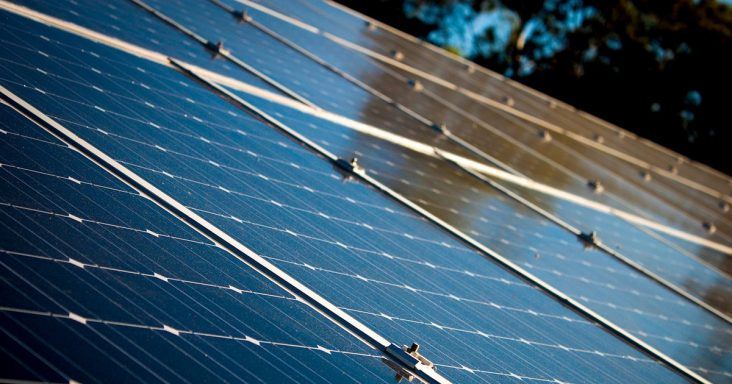2020 may be year of solar power for Sebastian County, Fort Smith
by December 20, 2019 2:24 pm 1,476 views

Sebastian County and Fort Smith officials may in 2020 invest in solar power and join a growing number of Arkansas cities and counties that built or announced solar power facilities in 2019. The move to renewable energy could include charging stations in downtown Fort Smith.
Solar power plant announcements in 2019 were frequent, with one of those being the city of Paris in the Fort Smith metro. City officials there announced Dec. 12 they had selected Little Rock-based solar energy company Today’s Power Inc. (TPI) to build a 1.5-megawatt solar array on 8 acres in the city. TPI will finance, operate and maintain 100% of the array, and under a 20-year contract, the city will purchase electricity the array generates at 4.68 cents per kilowatt-hour.
It was announced in September that North Little Rock-based solar power developer Scenic Hill Solar will build a 12.75-megawatt solar power plant that will meet the energy demand for all government operations of the city of Hot Springs. The $20 million plant will be the largest municipal solar power plant in the state after a 10-megawatt solar plant started to provide electricity to the city of Fayetteville in July. The Hot Springs plant is expected to save the city more than $30 million on electricity costs over the next 30 years.
On Sept. 17, Sebastian County Judge David Hudson signed an agreement with Seattle-based McKinstry Co. to evaluate solar power feasibility for the county. McKinstry will be paid $25,000 to undertake the 180-day review. Hudson also told Talk Business & Politics that Oklahoma City-based Oklahoma Gas & Electric (OG&E) “has requested a meeting to discuss solar energy and we plan to meet with them as soon as we can schedule a time.”
Rob Ratley, OG&E community affairs manager, said the utility is in “initial conversations” with the county and city of Fort Smith. He said working with local governments is part of “our corporate strategy is to have a mixed portfolio, to have a diversified portfolio and have a great balance going forward.” It’s too soon to know if a solar facility would be built in Oklahoma or western Arkansas.
“That’s a good question, but it’s really too early to say in great detail what that might look like,” Ratley said.
Ratley said “good things” will happen in 2020 concerning solar power in western Arkansas because technology, pricing and public acceptance are converging to make it financially attractive. Fort Smith Administrator Carl Geffken said the city plans to meet with OG&E officials in early 2020.
“OG&E is the supplier of electricity to the vast majority of Fort Smith and whatever electricity we generate via solar power, the excess will be sold to OG&E,” Geffken said.
He also said the city is working with OG&E and the Arkansas Department of Transportation to convert street lights on city and state roads to LED, which use around 90% less electricity. Another item possible in 2020 are charging stations.
“We are also working on placing charging stations downtown for electric vehicles. Although OG&E does not have a program at this moment, we will work with them when they do,” Geffken told Talk Business & Politics. “We will be installing charging stations so we can attract local and interstate drivers to come to Fort Smith, charge their vehicle, and to shop, eat, and enjoy our downtown. If the downtown is a success, we will look to expand it.”
According to energy consulting firm Wood Mackenzie, there will be 3 million installations in 2021 and 4 million in 2023.
“This $17 billion industry is on track to double again in five years, and we believe that the 2020s will be the decade that solar becomes the dominant new form of energy generation,” noted Abigail Ross Hopper, Solar Energy Industries Association president and CEO, said in May 2019.
